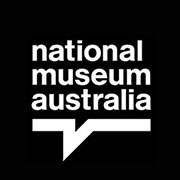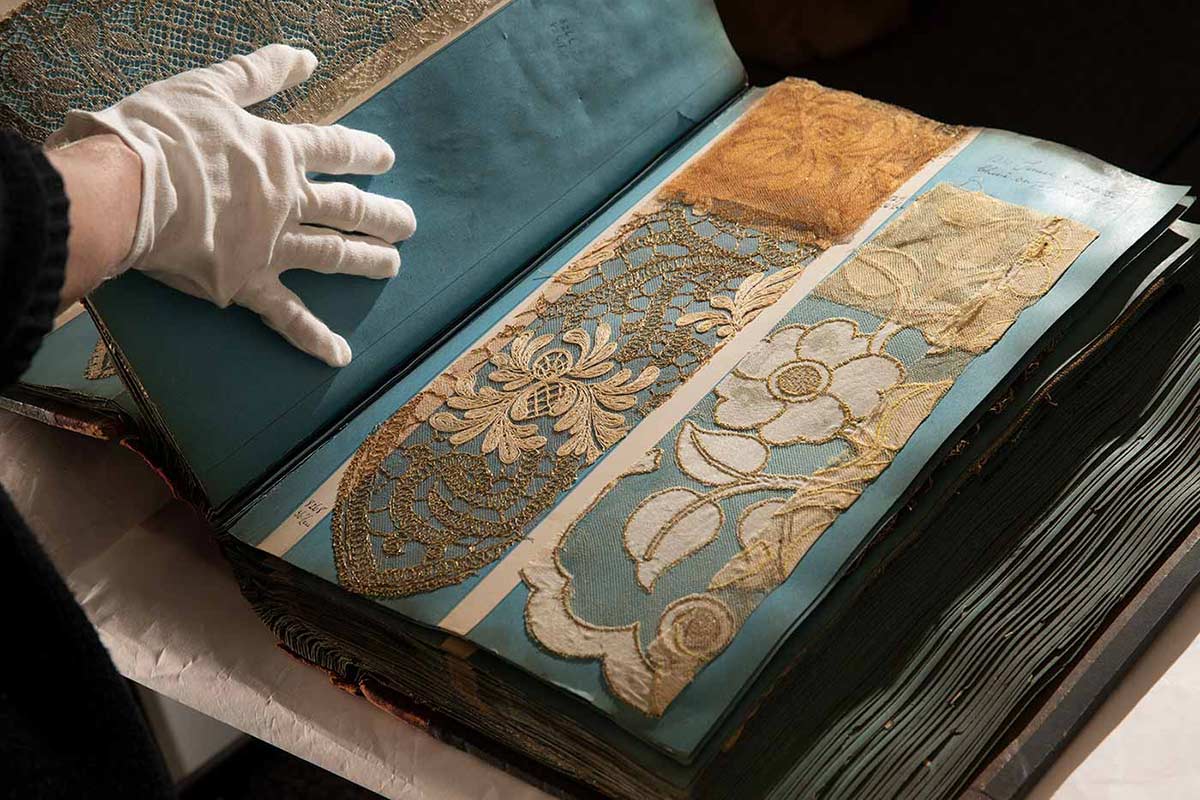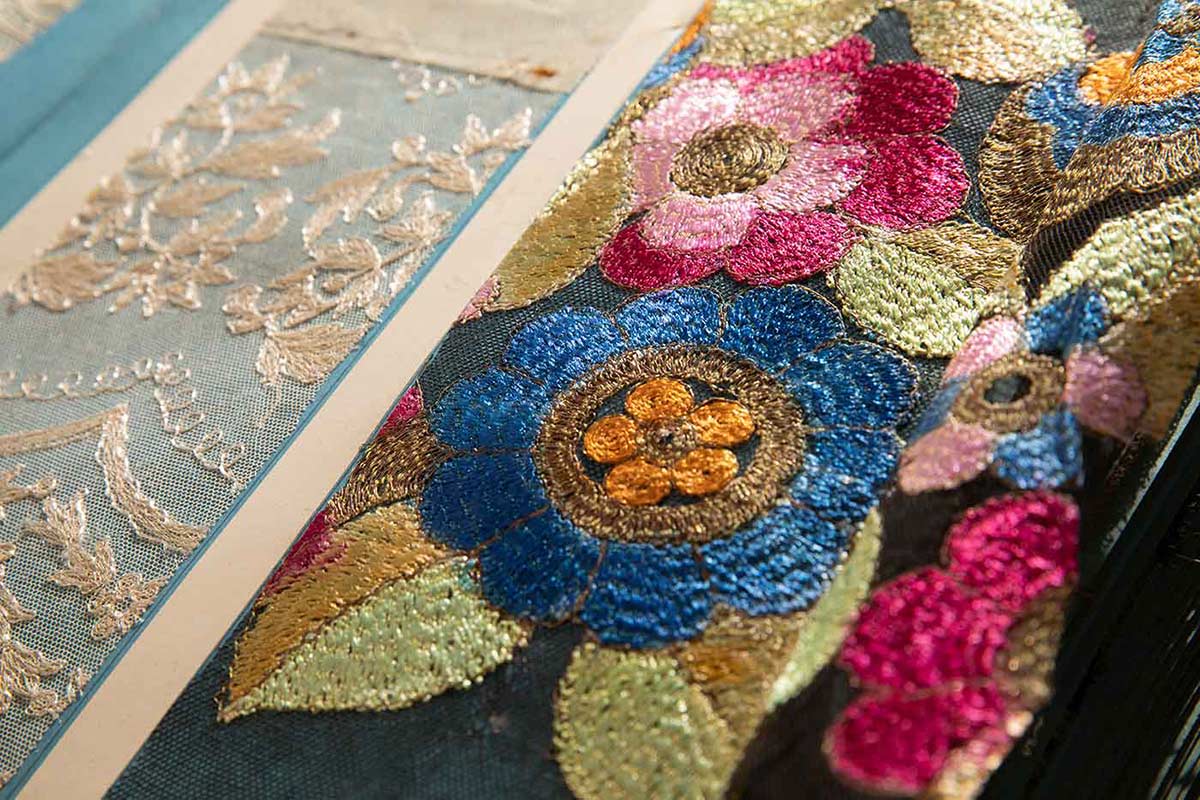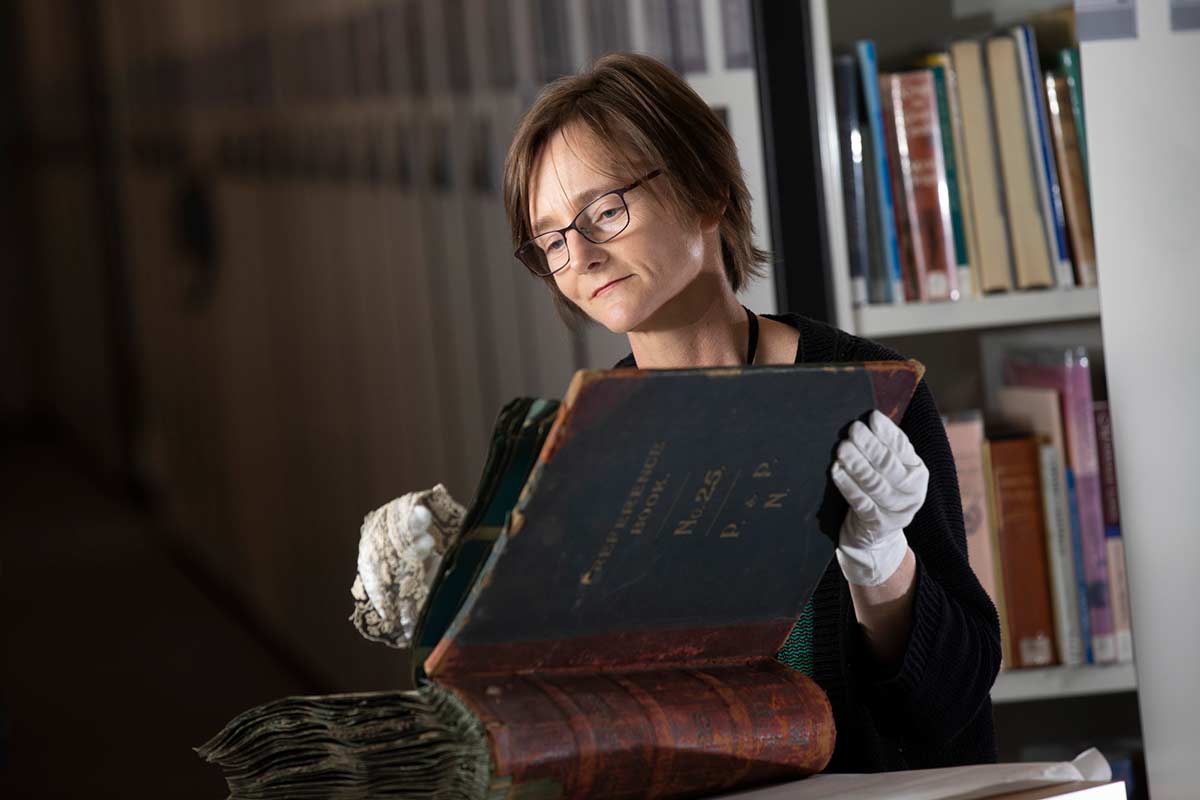
Lace. It’s such a lovely word that can evoke thoughts of a beautifully adorned dress or an extravagantly decorated cushion.
The Museum’s Research Library collects books written on many different facets of Australian life. They cover the history of Australian fashion, domesticity and handicrafts, all with the potential to feature lace.
But what could be better than a book about lace? The answer for us is simple – giant volumes containing genuine lace samples.
Lace sample volumes
Held in our rare books and special collections sit two enormous and weighty tomes. Inside are examples of machine-made lace.
Dating from around the 1890s, each page is full of specimens displaying a variety of width, style and colour. Pasted directly on the pages, the lace segments are mounted in two columns.
Volume 1 is numbered 25 on the front cover. This could suggest that several such sample books once existed and were made available. Sample books would have been assembled on a range fabrics, as well as other products, to be perused by customers before ordering.
An era of lace
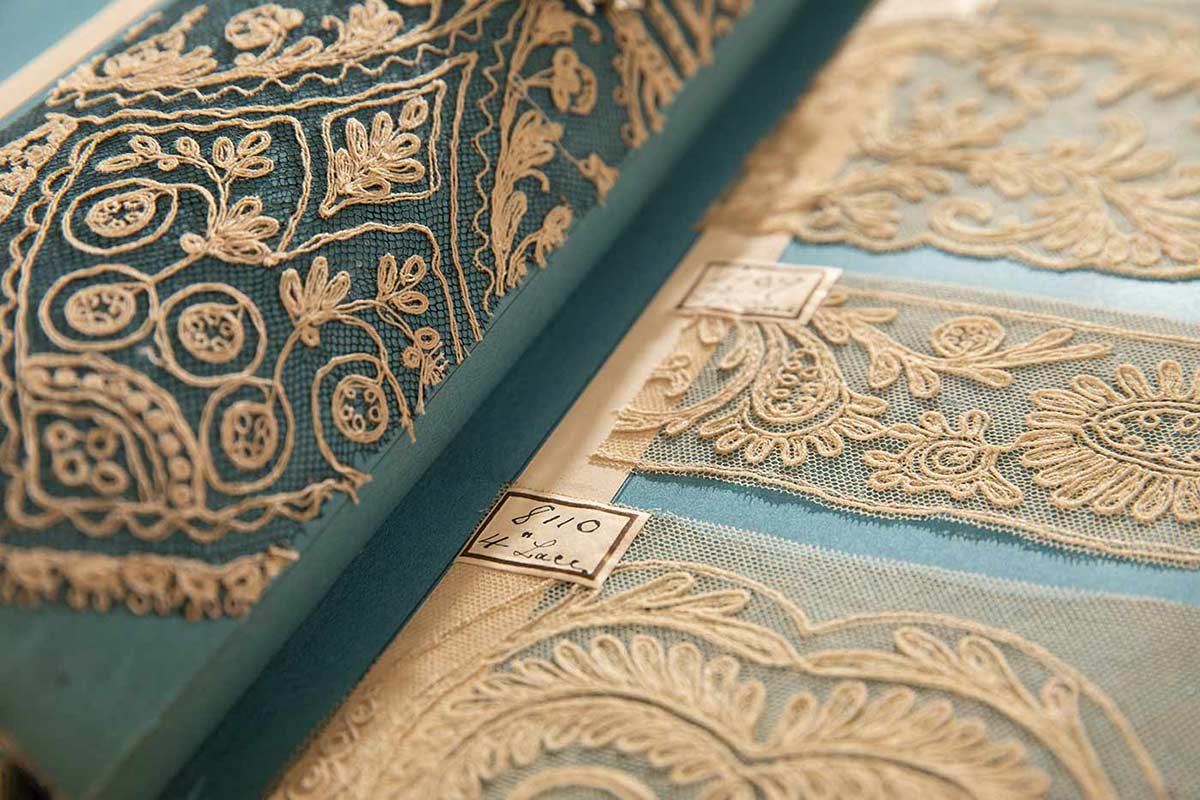
These two volumes were acquired in 2008. Their pages are filled with machine-made lace manufactured in Nottingham, England.
Nottingham was well connected to the industry and production of factory-made lace in the 19th century. It was an era when homes were habitually lined with lace curtains and tablecloths, and trimmings enhanced clothing and baby bonnets.
These volumes provide marvellous insight into the variety of lace sold throughout Australia in the late 1890s and early 1900s.
Making a selection
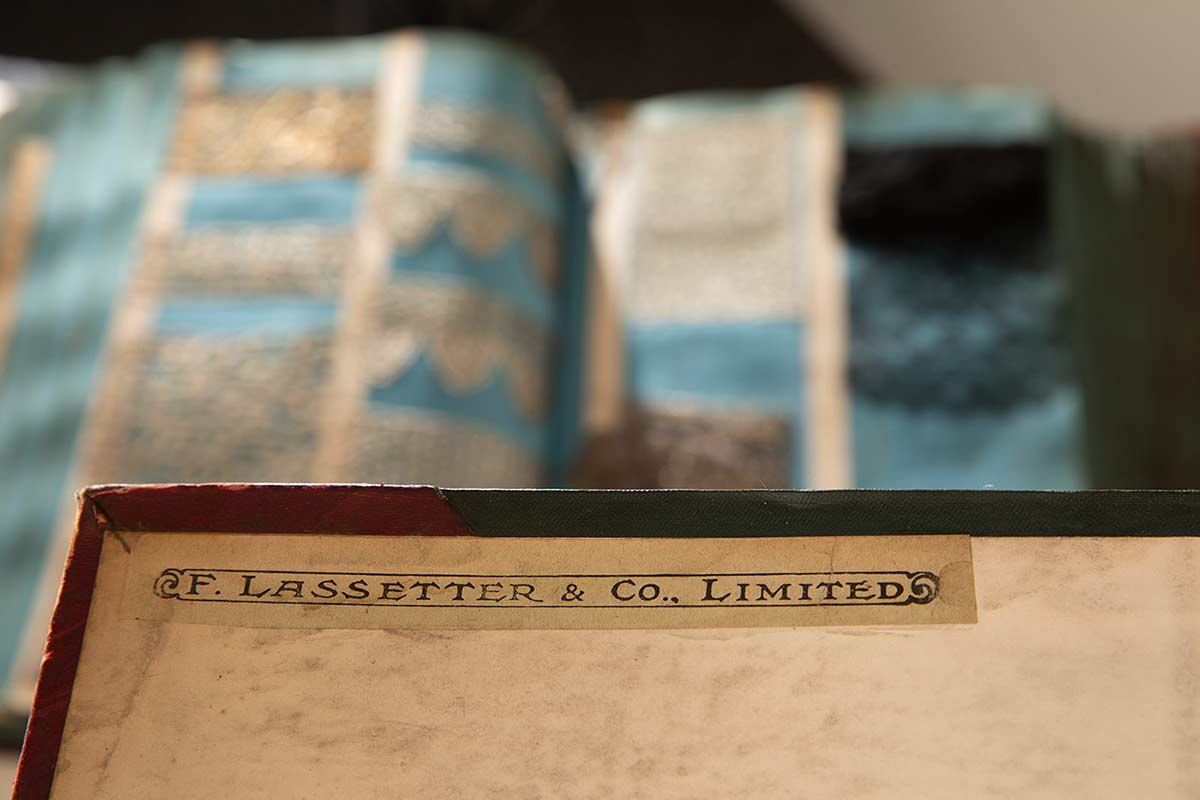
A handwritten number against each piece of lace indicates its former product code.
The lace in these volumes appears to have been made available for purchase through F. Lassetter & Co., a large retailer based in Sydney around the turn of the 20th century.
The firm’s trade included stock of ironmongery, dinnerware, furniture, millinery and drapery. Volume 2 bears the original ownership label of the firm affixed to the inside front cover.
Browsing the pages
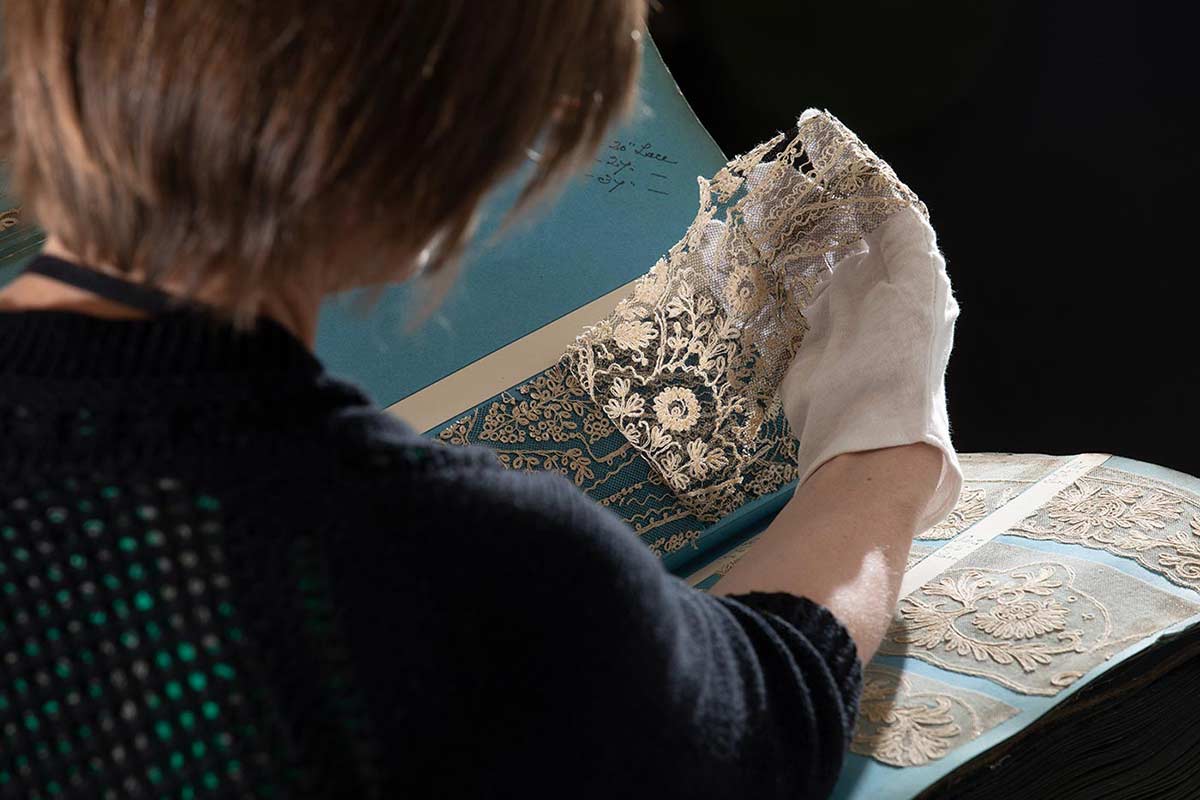
Twisted threads, some of silk, form intricate patterns to create beautifully textured mesh fabrics. Many of the lace segments unfold past the margins, so a great deal of care is required with each page turn.
The well-thumbed pages of these volumes provide evidence of their popularity. It’s nice to imagine them being sifted through a century ago in anticipation of finding the perfect trimming.
In our collection
